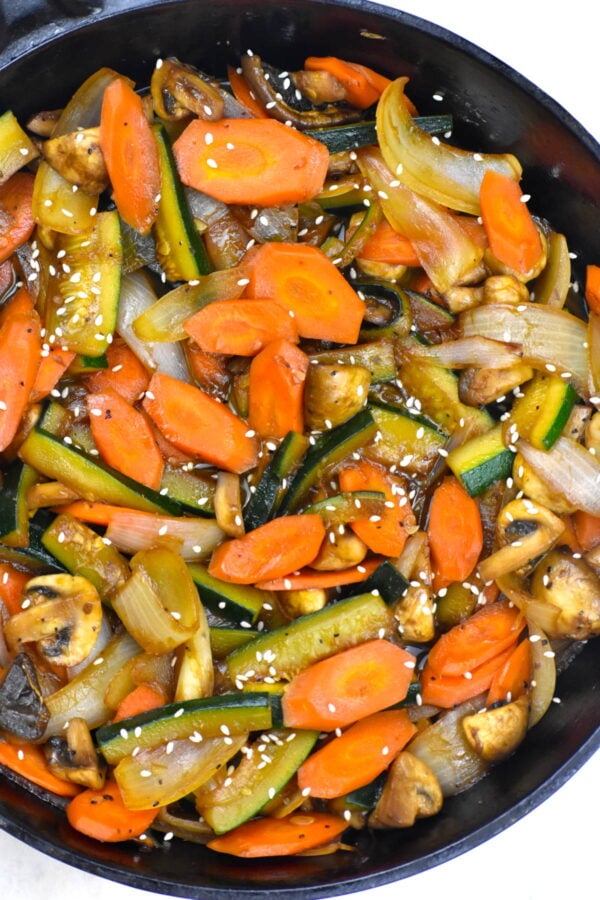I like to serve them up with Yum Yum Sauce, Hibachi Rice and Hibachi Chicken, and before you know it, you have a restaurant-quality dinner right at home!
What is Hibachi?
Hibachi is a traditional Japanese cooking method that has evolved in both Japan and the United States into distinct styles. In Japan, “hibachi” refers to a small, portable charcoal grill used for cooking. These grills are typically made of ceramic or metal and are used to grill a variety of foods. In the United States, people often use the word “hibachi” to mean the same thing as “teppanyaki,” which is a way of cooking food on a big, flat iron grill. At American hibachi restaurants, chefs cook the food right in front of you on these grills, doing fun and impressive tricks while they make your meal.
Ingredient Notes
Butter – One of the things that sets hibachi style cooking apart from other stir fry methods. It adds richness and a silky texture to the dish. You can use unsalted butter to control the saltiness, especially since soy sauce is also used. Veggies – I am using onion, carrot, zucchini and mushrooms. These are the most typically used vegetables, but you can always use others if you like. Soy Sauce – For the umami flavor. Black Pepper – Just a dash in the end.
How to Make Hibachi Vegetables
- Prep the cooking surface: I heat a large cast iron skillet or griddle over high heat. (Hint: a Blackstone Griddle is perfect for this recipe). When it’s nice and hot, I add the butter.
- Initial sauté: I stir fry the veggies for a few minutes until they just start to soften.
- Add sauce and finish cooking: Finally, I add in soy sauce and pepper and cook until the veggies are done but still hold some crunch.
Serving Suggestions
As I mentioned in the beginning of the post, for a complete Japanese hibachi dinner serve these veggies with Hibachi Chicken, Hibachi Fried Rice and Yum Yum Sauce. That being said, you can omit the chicken for a meatless dinner. These veggies also pair well with other stir fry dishes, especially when it lacks its own vegetables. Some ideas include Spicy Garlic Shrimp, Thai Basil Chicken or Ground Beef Bulgogi. If you like things on the fiery side, swap out the rice for our Spicy Noodles, and add a cooling side of Asian Cucumber Salad.
Expert Tips and Tricks
I Cut the veggies uniformly: This helps them to cook evenly at the same time. Preheat the pan: I make sure to preheat the pan to a high temperature before adding the vegetables. This mimics the hibachi grill’s high heat, which is essential for getting that characteristic sear and flavor. Cook in batches: If I am using a smaller skillet, I cook the vegetables in batches to avoid overcrowding. Overcrowding can lead to steaming rather than sautéing, which can make the vegetables soggy.
Give your vegetables a hibachi style makeover with my super quick and easy recipe. Once you try them, I bet you’ll be adding them to your regular side dish rotation. Pin or bookmark this great recipe so you always know where to find it. And be sure to subscribe to GypsyPlate so you don’t miss any of our recipes. While you’re here, check out our collection of favorite Asian recipes for more inspiration. Until next time…
Hibachi Vegetables, on our Gypsy Plate… enjoy!
More Great Japanese Recipes:KatsudonJapanese Beef CurryKaraage ChickenTeriyaki ChickenKatsu CurryMiso Ramen







